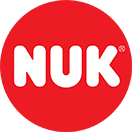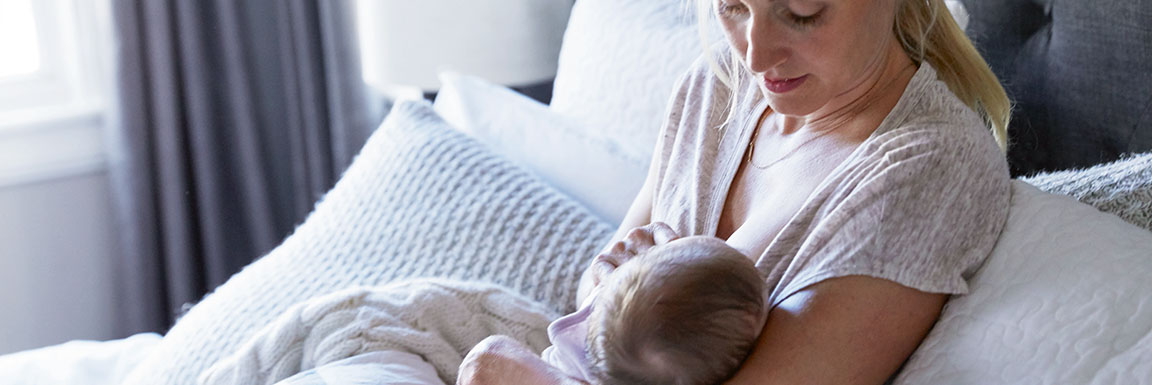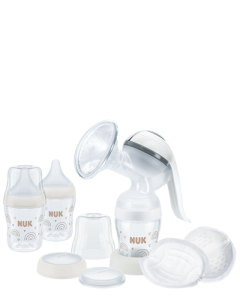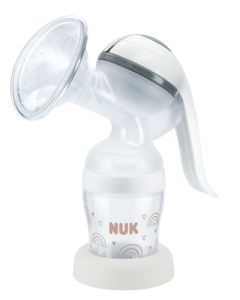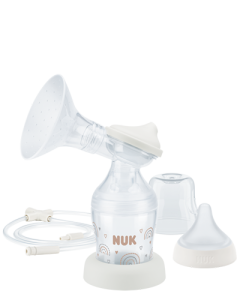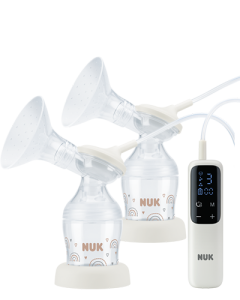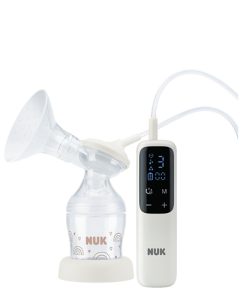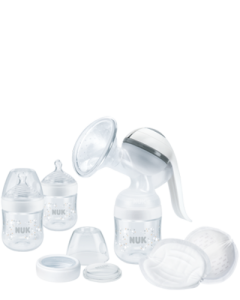Breast Pumps
Breast pumps - practical breastfeeding aids for everyday life as a mummy
Feeding your little darling with breast milk provides him with the most important nutrients for a healthy growth. But not every situation allows you to sit down and breastfeed your baby in a relaxed manner. In these cases, a breast pump is a valuable breastfeeding aid.
A common reason for using a breast pump is returning to work early. If you would like to return to work as soon as possible after the birth, but do not want to deprive your baby of valuable breast milk, you can use a breast pump to pump daily rations of breast milk.
It is also worthwhile using a breast pump if medical problems occur, such as breast inflammation caused by breastfeeding or frequent milk congestion. A breast pump can then be used to gently pump out the breast milk, thereby alleviating the symptoms.
In other cases, the use of a breast pump is not only practical but also indispensable. Premature babies, for example, are often too weak to suck enough breast milk from the breast by themselves. However, as the nutrients contained in breast milk are very important for the healthy development of the premature baby, breast milk can be pumped out and fed to your baby in a bottle.
Find the right breast pump: Electric or manual breast pumps?
If you are planning to buy a breast pump as a breastfeeding aid, you should first consider what exactly the pump will be used for. There are two types of breast pumps: manual and electric. Both carefully pump the milk from the mother's breast. In order to make a decision as to which version is the right one for your personal use, it helps to consider the frequency of use as a decisive factor:
- Manual breast pumps: If you only want to pump breast milk occasionally, the NUK Manual Breast Pump is the best option. The NUK Manual Breast Pumps are operated manually and thus allow breast milk to be pumped out at an individual rhythm. They are efficient and can be easily combined with the NUK Nature Sense breast milk containers.
- Electric breast pumps: If you want to pump your breast milk frequently or daily, we recommend purchasing an electric breast pump from NUK. The integrated motor then takes over the pumping movement, allowing you to relax even during pumping. Thanks to various suction settings and suction rhythms, breast milk is pumped out particularly gently and efficiently. The rhythm can also be determined individually.
The correct handling of the breast pump
One of the most important aspects when using a breast pump is cleanliness. All parts of the breast pump should be cleaned thoroughly prior to use. They must also be cleaned after each use, which is especially important for the parts that come into contact with the breast or breast milk. In general, however, the entire device should be cleaned. Once the breast pump has dried completely, it can be reused.
Cleaning the breast pump in 4 steps:
1. Remove residues of milk proteins with clear drinking water.
2. Clean all parts with warm water and washing-up liquid. The moving parts, such as the breast shield, ring, sealing disc, silicone pad and breast milk container can also be cleaned in the dishwasher.
3. Afterwards, the parts should be dried thoroughly with a clean tea towel or simply left to dry on it.
4. Sterilising the breast pump parts regularly is essential in order to avoid germs. This can be done by boiling them in a pot, in the microwave, e.g. with the NUK Microwave Vaporizer, or by using a steam steriliser such as the NUK Vaporiser, which is also available for domestic use.
Important: Do not forget to wash your hands before using the breast pump! Your hands should be thoroughly washed for at least 20 seconds. Even if you only want to touch the parts of the breast pump. It is usually only necessary to clean the breast if lotion, or something similar, has been applied.
Storage of breast milk
The breast milk can be cooled, frozen and defrosted in the breast milk container. The breast milk container can also be used for warming and feeding.
If the breast milk is not used immediately, you must close the filled breast milk container tightly with the sealing disc and the ring and store it in the refrigerator or freeze it.
Note the date and time when you pumped the milk or use labels on the breast milk container using a pen suitable for freezing. When freezing breast milk, do not fill the breast milk container over 150 ml, as breast milk expands when it freezes. NUK Breast Milk Bags also offer a space-saving solution for freezing and storing your valuable breast milk.
When transporting chilled breast milk ensure that the cold chain is never interrupted. Otherwise the milk could go off and harm the baby. For example, use an insulated bag with cool packs. Defrosted, heated or unused milk must not be refrozen, instead it must be disposed of.
Breast milk must not be thawed in the microwave, otherwise valuable ingredients may be destroyed and the container itself may become damaged. Uneven heating may cause scalding! If milk is heated too much, vitamins and valuable ingredients are destroyed.
Always check the temperature of the milk before feeding your baby.
To achieve the correct drinking temperature of approx. 37 °C, place the container with the thawed breast milk in the NUK Baby Food Warmer, for example.
